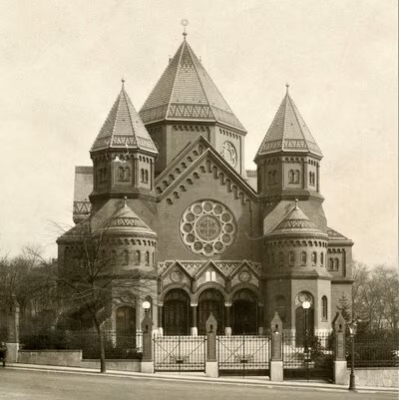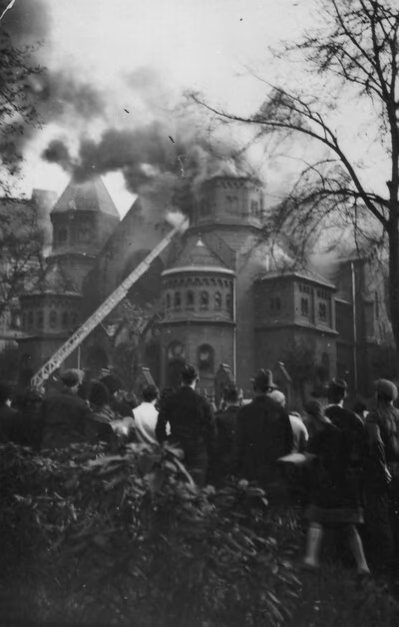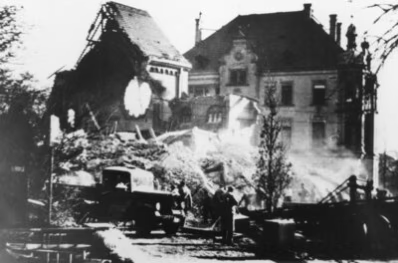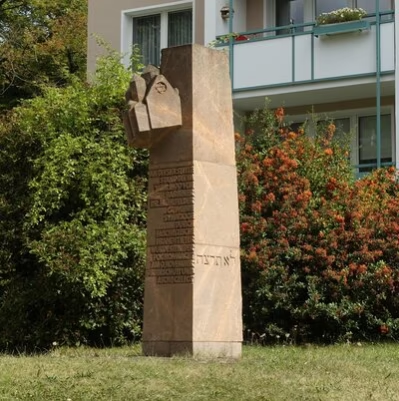Discover history: Old Synagogue
A Jewish community had existed in Chemnitz since 1885, gathering for services in rented rooms and a provisional prayer hall. The strong growth of the community eventually led to the construction of a prestigious synagogue on Kaßberg, which was inaugurated on 7 March 1899.
Wenzel Bürger, a young architect from Chemnitz, developed the plans for a neo-Romanesque central building with an entrance hall in front. The centre of the main synagogue was marked by an eight-sided crossing dome, whose tent roof corresponded with the bonnets of the low towers on the main façade. New and unusual in the cityscape was the effectively staged colour scheme of the building, which resulted from the contrast between the red brickwork and the green glazed roof covering. The interior was just as splendid with its richly decorated murals and stained glass, organ and Torah shrine.
After the National Socialists seized power in 1933, the Jewish population in Chemnitz also faced reprisals. On the night of the pogrom on 9 November 1938, the synagogue was finally destroyed by arson. In the days that followed, the ruins were blown up and cleared. The Jewish community had to bear the costs themselves. Almost all members of the community were deported to the extermination camps in the East in the following years. For the few survivors and Jews who returned to Chemnitz, a new community centre was built on Stollberger Straße in 1961. Today, the new Chemnitz Synagogue, inaugurated in 2002, stands in its place. Since 1988, a stele at the old site has commemorated the historic place of worship and its violent end.





